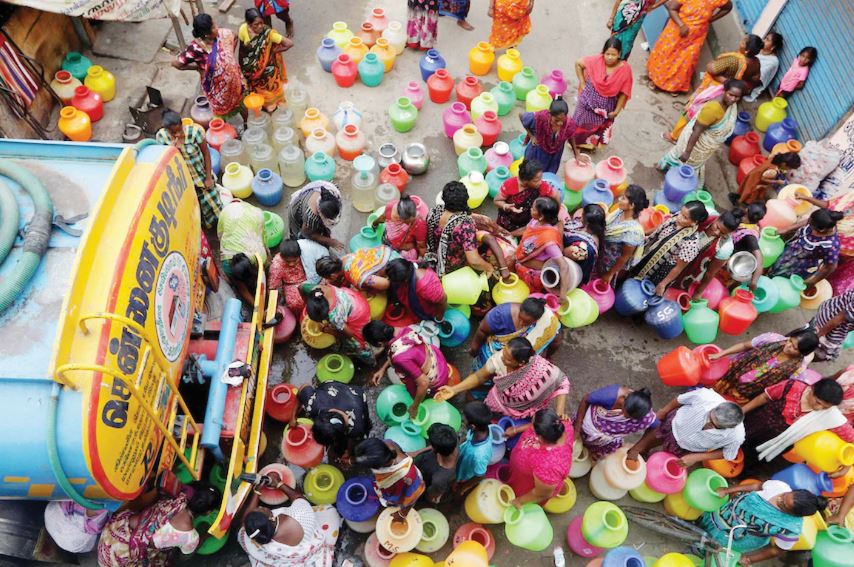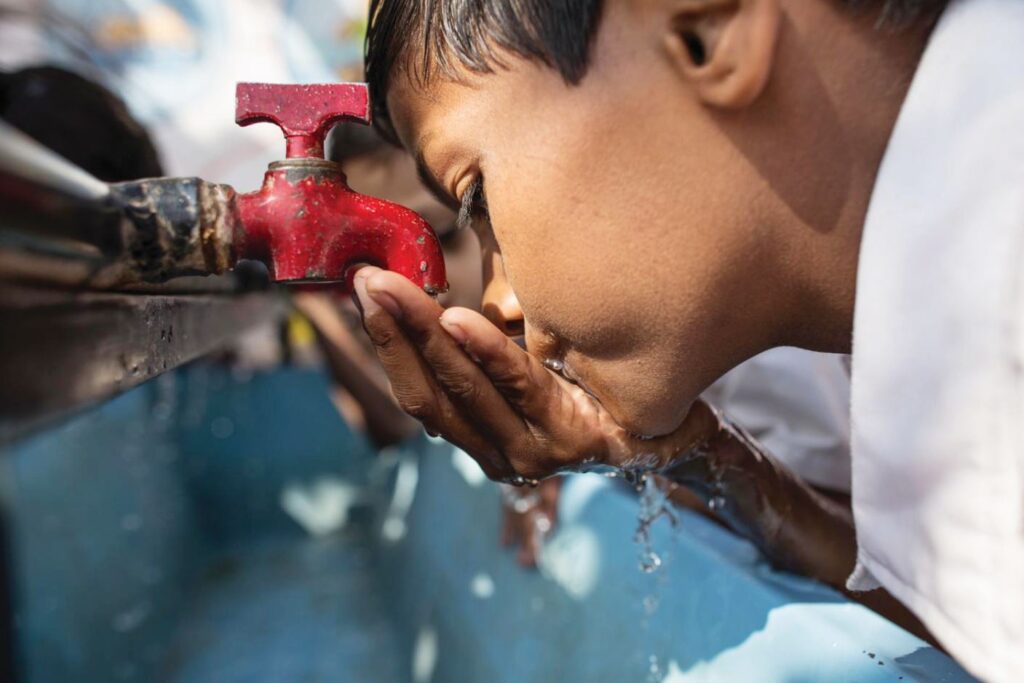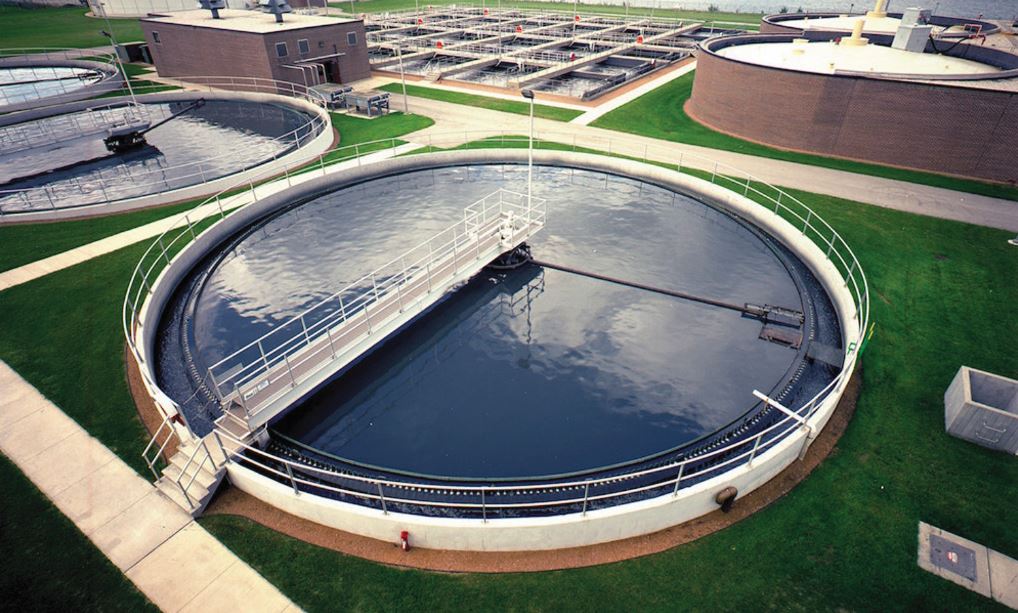With its growing population and its rising need for fast-paced development, India is facing challenges in preserving the precious natural reserve – Water, which is the lifeline of humans and is fundamental to life, livelihood, food security and sustainable development
By Barish Raman
- By 2025, 1.8 billion people will be living in regions with absolute water scarcity, according to UN-Water
- India has 17.7 percent of the world’s population and only 4 percent of the world’s water resources at its disposal
- Around one billion people in India live in areas of physical water scarcity
- 2021 has been the rainiest in Kerala in the last six decades, with the state having received 110% excess rainfall
AMID the severe heatwave, Delhiites had been facing a water crisis in May as the River Yamuna had “almost dried up.” The Delhi Government had also sent an ‘SOS’ to its neighbouring State Haryana, urging it to release water. The SOS sent on 13th May stated, “Even flow via CLC (Carrier-Lined Channel) and DSB (Delhi Sub-Branch) is fluctuating… The lifting of 120 cusecs of water from the Wazirabad pond is affected due to the low pond level. This will affect water production adversely. Due to peak summer, the water requirement is more.” “It is requested to supply 150 cusecs of raw water additionally through DD-8/river route, to ensure that 120 cusec of raw water reaches the Wazirabad pond in this time of crisis, till the arrival of monsoon,” it further stated. This situation is alarming us towards the frightening future without the precious natural resource – Water.
As we are all aware of the fact that water covers approximately 70 percent of the earth, but only 2 percent of it is freshwater of which 1.3 percent is in the form of glaciers and polar ice caps. And many developing countries are struggling with ensuring that this basic resource is safe and accessible, over 40% of the global population does not have access to sufficient clean water. By 2025, 1.8 billion people will be living in countries or regions with absolute water scarcity, according to UN-Water.
WHERE DOES INDIA STAND?
The lack of water poses a major threat to several sectors, including food security. Agriculture uses about 70% of the world’s accessible freshwater. Developing countries are most affected by water shortages, flooding and poor water quality. Up to 80% of illnesses in the developing world are linked to inadequate water and sanitation. Nowhere is this more obvious than in India.
India has 17.7 percent of the world’s population and only 4 percent of the world’s water resources at its disposal. The situation is made worse by the fact that 70 per cent of its water is contaminated. As a result, India ranks 120 among 122 countries on the Water Quality Index released by WaterAid. As many as one billion people in India live in areas of physical water scarcity, of which 600 million are in areas of high to extreme water stress, according to a new report.
Globally, close to four billion people live in water-scarce areas, where, for at least part of the year, demand exceeds supply, said the report by the non-profit organisation ‘WaterAid.’ This number is expected to go up to 5 billion by 2050, said the report titled ‘Beneath the Surface: The State of the World’s Water 2019’.
By 2050, the World Bank estimates, erratic rainfall, combined with rising temperatures, stands to “depress the living standards of nearly half the country’s population.” Is India waking up to a new reality recently? Or we already had the wisdom to foresee this threat. Ironically, India was a pioneer in developing National Water Policy (NWP), way back in 1987, which was rather uncommon in those days. The policy has been revised twice, in 2002 and 2012. NITI Aayog has said that India is facing its first water crisis and the demand for potable water may outstrip supply by the year 2030 if precautionary steps are not taken.
The Composite Water Management Index (CWMI) report released by the NITI Aayog in June 2018 stated that 21 major cities including Delhi, Bengaluru, Chennai and Hyderabad are racing towards zero groundwater levels affecting access for 100 million people. Sustainable Development Goals (SDGs), which came into effect on January 1, 2016, aim to ensure Clean Water and Sanitation availability and sustainable management of water for all (Goal 6) by the year 2030.
This is a basic human right which needs to be given the highest priority over other demands, considering the impact of a water crisis on food supply as well. The northern states at risk of water scarcity as per the CWMI report also account for about 20- 30 percent of the country’s agricultural output, which indicates the associated food security risk for India.

NITI Aayog has said that India is facing its first water crisis and the demand for potable water may outstrip supply by the year 2030 if precautionary steps are not taken
NWP, 2012 opens with the statement – ‘A scarce natural resource, water is fundamental to life, livelihood, food security and sustainable development. India has more than 18 % of the world’s population but has only 4% of the world’s renewable water resources and 2.4% of the world’s land area. There are further limits on utilisable quantities of water owing to uneven distribution over time and space.
In addition, there are challenges of frequent floods and droughts in one or the other part of the country. With a growing population and rising needs of a fast-developing nation as well as the given indications of the impact of climate change, availability of utilisable water will be under further strain in future with the possibility of deepening water conflicts among different user groups.’
It goes on to enumerate twenty-six important concerns about water resources and their management which includes urbanisation, water governance, groundwater recharge, etc. It also lists the basic principles which should guide the public policies on water resources and talks about the principle of equity and social justice among others. More than half a decade later, the ground reality is grimmer.
PLETHORA OF POLICIES
The Modi government launched Jal Shakti Abhiyan (JSA) in 2019, a time-bound campaign with a mission mode approach intended to improve water availability including groundwater conditions in the water-stressed blocks of 256 districts in India. In this regard, teams of officers from the central government along with technical officers from the Ministry of Jal Shakti were deputed to visit water-stressed districts and to work in close collaboration with district-level officials to undertake suitable interventions.
In addition, the Ministry of Jal Shakti has taken up the “Jal Shakti Abhiyan: Catch the Rain” with the theme “Catch the Rain – Where it Falls When it Falls” to cover all the blocks of all districts (rural as well as urban areas) across the country during 22nd March 2021 to 30th November 2021. The campaign was launched by PM Modi on 22 March 2021.
In 2016, a Committee constituted by the Ministry of Water Resources, River Development and Ganga Rejuvenation under the Chairmanship of Dr Mihir Shah suggested a draft National Water Framework Bill, 2016 which contains provisions for an overarching national legal framework with principles for protection, conservation, regulation and management of water as a vital and stressed natural resource. The Bill also talks about the Right to water for life, wherein ‘every person has a right to sufficient quantity of safe water for life within easy reach of the household regardless of, among others, caste, creed, religion, community, class, gender, age, disability, economic status, land ownership and place of residence.’
Atal Bhujal Yojana (Atal Jal), a Rs. 6,000.00 crore Central Sector Scheme, for sustainable management of groundwater resources with community participation is being implemented in 81 water-stressed districts and 8774 Gram Panchayats of seven States viz. Gujarat, Haryana, Karnataka, Madhya Pradesh, Maharashtra, Rajasthan and Uttar Pradesh.
IS WATER STATE MATTER?
Central Ground Water Board (CGWB) in consultation with States/UTs has prepared ‘Master Plan for Artificial Recharge to Groundwater – 2020’, which is an improvement of the earlier Master Plan – 2013. The Master Plan – 2020 is basically a macro-level plan indicating various structures for the different terrain conditions of the country including estimated cost.
The Master Plan – 2020 envisages the construction of about 1.42 crore Rainwater harvesting and artificial recharge structures in the Country to harness 185 Billion Cubic Metre (BCM) of monsoon rainfall with an estimated cost of about Rs. 1.33 Lakh Crores. CGWB periodically monitors groundwater levels throughout the Country including metro cities on a regional scale, through a network of monitoring wells. To assess the decline in water level on a long-term basis, the water level data collected by CGWB during November 2020 has been compared with the decadal average (2010-2019).
Analysis of water level data indicates about 33% of the wells monitored have registered a decline in groundwater levels in the range of 0 – 2 m. A decline of more than 4.0 m has also been observed in a few pockets of Delhi, Chennai, Indore, Coimbatore, Madurai, Vijayawada, Dehradun, Jaipur, Allahabad, Ghaziabad, Kanpur, and Lucknow. However, CGWB has not carried out any survey to measure the total demand and the existing supply of water in big cities of the countries.
Water being a state subject, initiatives on water management including water conservation and water harvesting and making available adequate drinkable water to citizens in the Country is primarily the states’ responsibility. However, important measures were taken by the Central Government for conservation, management of groundwater and effective implementation of rainwater harvesting in the country.

Drinking water and sanitation are state subjects but the Centre allocates funds and support to the states on the basis of their needs and contexts. The central government financed the erstwhile rural drinking water programme, now subsumed under the Jal Jeevan Mission
Some states have done notable work in the field of water conservation/harvesting for sustainable management of water resources. In this regard mention can be made of ‘Mukhyamantri Jal Swavlamban Abhiyan’ in Rajasthan, ‘Jalyukt Shibar’ in Maharashtra, ‘Sujalam Sufalam Abhiyan’ in Gujarat, ‘Mission Kakatiya’ in Telangana, Neeru Chettu’ in Andhra Pradesh, Jal Jeevan Hariyali in Bihar, ‘Jal Hi Jeevan’ in Haryana among others.
Additionally, states also need to drop the practice of supplying free and subsidised water. Market-based solutions through the pricing of water supplied to urban homes can encourage efficient usage of water. Equity can be ensured through consumption slabs for the same. Delhi government, for instance, is making laudable efforts to address the water crisis by initiating water harvesting plans on the Yamuna floodplains and installation of rainwater harvesting structures in all government buildings and existing structures. But these efforts need to be supplemented with the elimination of free water supply to households that can very well afford to pay for it.
Some state governments run state-specific piped drinking water projects such as Sujal in Odisha and Mission Bhagiratha in Telangana. India’s water budget is big compared to other South Asian countries, but studies estimate that this must exceed 3% of the estimated gross domestic product (GDP) in 2030 to provide for sustainable water management.
BUDGET FOR WATER
Looking at the gravity of the problem, the Union Government has formed a Jal Shakti Ministry, which has launched a targeted water conservation programme that emphasises specific interventions like rainwater harvesting and watershed development. While this is a step in the right direction, India cannot fight this problem without changing the dystopian reality of its agriculture and irrigation system. To ensure complete utilisation and maintenance of irrigation assets, states need to implement robust participatory irrigation management measures. There is a need to modernise the irrigation methods and adopt newer technologies while also switching to less water-intensive cash crops.
In five years to 2020-21, the government allocated an annual average of Rs 27,413 crore ($3.8 billion), or 1.1% of the budget, to the departments of water resources, river development and Ganga rejuvenation, and drinking water and sanitation, all merged to form the Ministry of Jal Shakti in 2019. Around 71% of the allocation went to the Department of Drinking Water and Sanitation, the rest (29%) to the Department of Water Resources, River Development and Ganga Rejuvenation. Drinking water and sanitation are state subjects but the Centre allocates funds and support to the states based on their needs and contexts. The central government financed the erstwhile rural drinking water programme, now subsumed under the Jal Jeevan Mission.
To develop long-term solutions, the government can incentivize entrepreneurs in designing decentralised technologies for measuring and improving water quality and recharging groundwater. They also need to renovate existing infrastructures, such as water treatment plants, water networks and reservoirs. The idea is to supply water to more people using the same capacities, rather than waiting for new infrastructures to be built. Public-private partnerships can be the way to go, where the public sector must retain ownership of the assets and set tariffs ensuring that these resources are affordable for all.
Lastly, emphasis on behavioural change should also be made. As local citizens and beneficiaries, we need to have the realisation of our responsibilities and face the consequences of our actions. We need to keep our own usage and actions in check to overcome this issue before most of our cities are parched.

To develop long-term solutions, state governments can incentivize entrepreneurs in designing decentralised technologies for measuring and improving water quality and recharging groundwater.They also need to renovate existing infrastructures, such as water treatment plants, water networks and reservoirs
GROUNDWATER DEPLETION
One of the major reasons for this water crisis is groundwater depletion. Many states like Delhi, Haryana, Punjab and Rajasthan have an annual groundwater consumption much greater than annual groundwater recharge. Moreover, this is only increasing with time. According to a study, India’s rate of groundwater depletion increased by 23 percent between 2000 and 2010. India also uses the largest amount of groundwater – 24 per cent of the global total – which is even more than China. This has resulted in overexploitation and contamination of groundwater.
Another problem is the neglect of local water bodies which are being encroached on or have dried out. Over-reliance on monsoons with water management systems has led to this predicament. The World Health Organisation (WHO) states that an individual requires around 25 litres of water daily for meeting his/her basic hygiene and food needs. The rest is used for purposes like mopping and cleaning. This shows that for purposes other than drinking, non-potable water can be supplied. Thus, for economic efficiency and environmental sustainability, water must be supplied according to usage.
In urban and semi-urban areas, the water mafia has spread its wings in connivance with local politicians and administrators. They take advantage of the shortcomings of the government supply system in the most impoverished neighbourhoods to establish the black market. They go to the extent of damaging water pipes and diverting tanker routes to mint money. “This summer, I spent Rs 2000 from my monthly income of Rs 9000 on getting water for my house. They were charging Rs 30 per bucket of water. This is pure cheating. The water which is meant for us is supplied to hotels and malls, every night I see tankers lined up near these malls”, complains Ravi, a resident of south Delhi’s Sangam Vihar community.
NATURE’S FURY?
The irony, on the other hand, is that there are cities and other parts of the country which saw unprecedented flooding. Mumbai got more rain last year than it had in 50 years, and several times this season, it came in exceptionally heavy downpours. 2021 has been the rainiest in Kerala in the last six decades, say, climatologists, with the state having received 110% excess rainfall from the northwest monsoon. The excess precipitation has not only caused damage to life and property in the state but has also left farmers in a fix. Over the last century, the number of days with heavy rainfall has increased in the Indian subcontinent.
These heavy spells are interspersed by longer dry spells which affect the agricultural economy of the country adversely. Predictable and steady rainfall has become less common, which affects the groundwater recharge severely. According to a scientific paper published in Nature journal, over the last 70 years, extreme rainfall events have increased threefold in the central region of India, while total annual rainfall has measurably declined. Assam, Bihar, Odisha and West Bengal have always been ravaged by the floods. Extreme rainfall shocks increase the risk of floods, which Rajasthan witnessed across many cities in 2017. India could see a six-fold increase in the population exposed to such floods by 2040–to 25 million people from 3.7 million between 1971 and 2004–if no efforts are made at mitigation.
